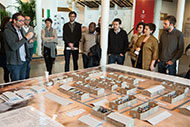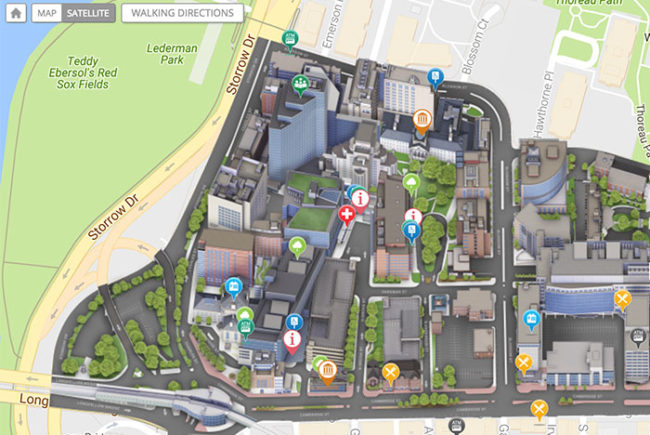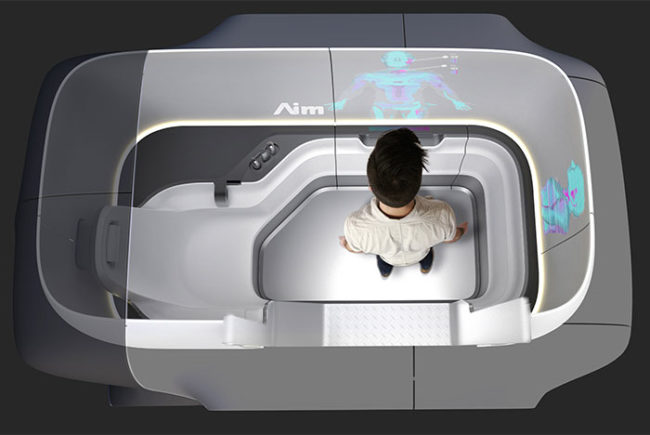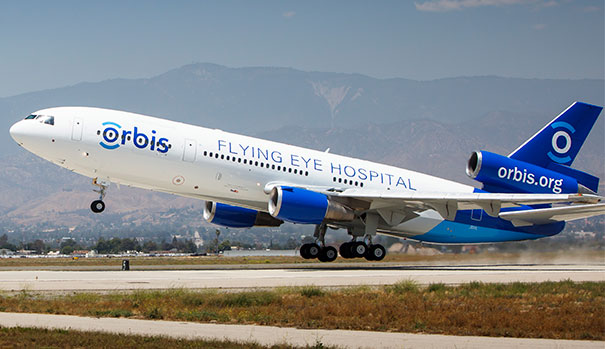
Orbis' third-generation Flying Eye Hospital will help train medical teams across the world.
Ophthalmologists flying high on mobile solution
Orbis recently unveiled its next-generation Flying Eye Hospital. The international nonprofit has been fighting blindness for more than 30 years through its mobile medical training program. Its newest addition, the MD-10, is its third plane and an improvement over previous generations.
The aircraft donated by FedEx includes a laser and examination room, a substerile room where nurses sterilize equipment and medical staff scrub in before surgery. The operating room is located in line with the plane’s wings — the most stable part of the aircraft. The operating room’s floor is reinforced to withstand the weight of heavy equipment that is either stored or strapped down during flight. It also houses five cameras that record both close-up and wide shots during surgeries.
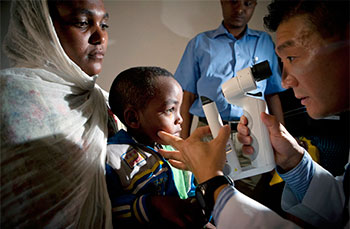
Doctor examines child aboard the Flying Eye Hospital
Those recordings can be watched in the 48-seat classroom, which is also equipped for two-way audiovisual to support discussions in real-time. The plane’s audiovisual room is where its eight microphones, 17 cameras and 54 monitors are controlled. The recovery room located in the rear includes three beds where patients are prepped for surgery and where they also recover postoperatively. A crash cart is available in cases of emergency.
In addition to traveling to various countries and training medical teams aboard the mobile hospital, Orbis also has developed Cybersight, a telemedicine program that offers free continuing medical education.
“We are not here to show off, we are here to show how,” says Daniel Neely, M.D., Orbis volunteer pediatric ophthalmic surgeon and medical adviser. “The new technologies on the Flying Eye Hospital, such as the 3-D broadcast technology of the surgical microscope, allow us as teachers to share, train and interact with more of our colleagues in the developing world, giving a deeper and richer learning environment to transfer the skills to their practice.”
Digital monitoring provides patient autonomy
Holy Name Medical Center in Teaneck, N.J., is piloting a new technology that uses digital monitoring to continuously track patients’ vital signs. The ViSi Mobile device, about the size of a business card, is worn on the wrist and transmits patient information to clinicians on an ongoing basis. The body-worn monitor non-invasively measures all core vital signs including blood pressure, heart or pulse rate, electrocardiogram or heart rhythm, blood oxygenation, respiration rate and skin temperature. The monitoring system runs on the hospital’s wireless network.
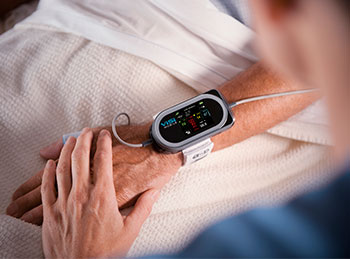
The device not only allows continuous monitoring of vital signs, but also allows patients to be more mobile.
In addition to supporting safety, the system also aligns with Holy Name's ongoing efforts to improve the overall healing experience. The lightweight device promotes mobility — patients are able to get out of bed, walk around, shower and undergo physical therapy — all while remaining connected to clinicians.
“The No. 1 benefit is improved patient safety,” says Michael Maron, president and CEO. “While real-time patient monitoring is a trend that is just beginning to take hold in leading medical institutions throughout the nation, Holy Name has been testing this technology for years in conjunction with the Telemedicine and Advanced Technology Research Center of the Department of Defense.”
Finland takes a 3-D walk through its first single-patient ICU
Seinäjoki CentralHospitalin Finland worked with VTT Technical Research Centre to design a 3-D model of the country’s first intensive care unit with single-patient rooms.
Another partner in the project, Seinäjoki University of Applied Sciences used CAD to design a virtual space that allows staff to “walk through” the hospital via computers and tablets. The hospital will open in 2018, but the public can check out what the new space will look like in the video below.



